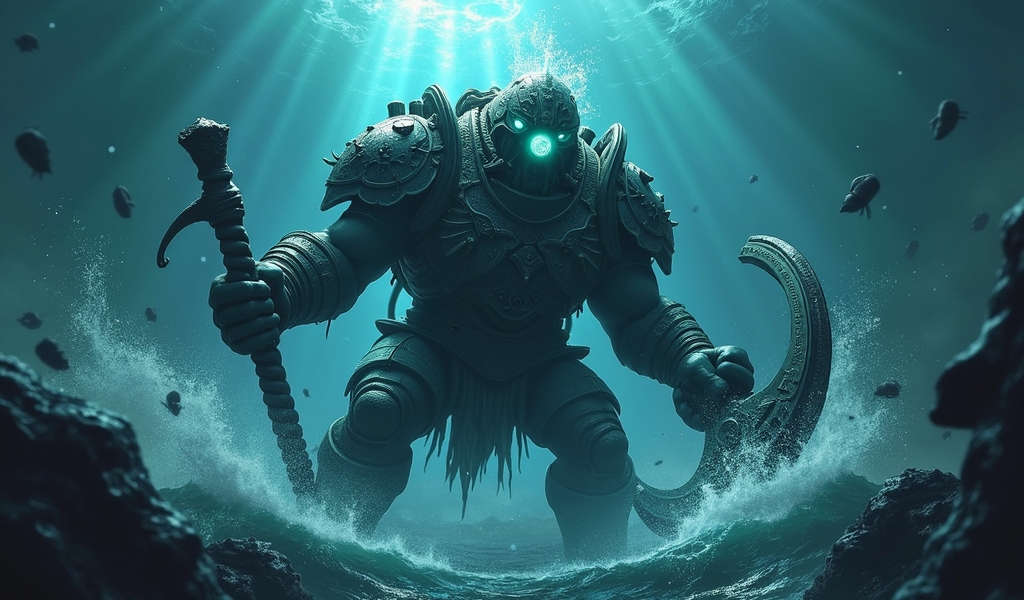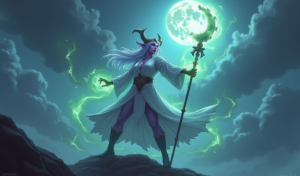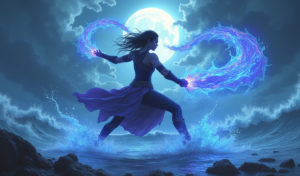Overview
How to play Nautilus effectively involves mastering his crowd control abilities, including his signature hook and point-and-click ultimate, while adapting your build to focus on tankiness and ability haste. The Titan of the Depths excels at both initiating teamfights and peeling for carries, making him a versatile support who thrives when paired with ADCs that can capitalize on his engage potential.
Table of Contents
Introduction to Nautilus
Learning how to play Nautilus effectively can transform your support game in League of Legends. As one of the most reliable engage supports in the game, Nautilus combines impressive crowd control with surprising durability. The Titan of the Depths offers a straightforward yet impactful playstyle that can carry teams to victory through well-timed engages and peeling capabilities.
Nautilus excels at locking down priority targets with his point-and-click ultimate and creating opportunities for his team to follow up. His kit is designed to control the battlefield, making him an excellent choice for players who enjoy dictating the pace of engagements. Additionally, his tanky build allows him to absorb significant damage while protecting his carries.
In this comprehensive guide, we’ll explore seven essential tips for mastering Nautilus, from understanding his abilities to maximizing his impact in teamfights. Whether you’re new to the champion or looking to refine your skills, these strategies will help you anchor your enemies and lead your team to victory.
Mastering Nautilus’s Abilities
To truly understand how to play Nautilus, you must first master his ability kit. Nautilus’s passive, Staggering Blow, applies a brief root to enemies he hasn’t recently auto-attacked. This makes him exceptional at controlling lane opponents and setting up kills.
His Q ability, Dredge Line, is Nautilus’s signature hook that pulls him toward terrain or enemies. When aiming hooks, try to predict enemy movement rather than aiming directly at their current position. This skill requires practice but becomes incredibly potent once mastered. Remember that you can use this ability to escape by hooking walls or jungle camps in desperate situations.
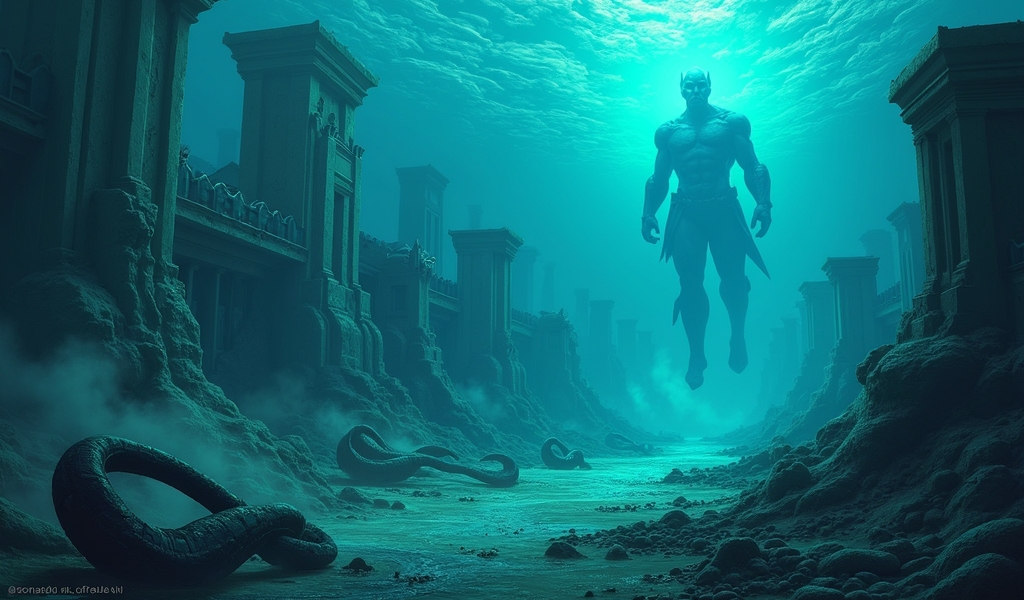
Early Game Strategy and Lane Presence
The early game is where Nautilus can establish dominance and set the tone for the match. Your level 2 power spike with Q and W is particularly strong, often allowing you to secure first blood or force summoner spells. Always try to hit level 2 before your opponents by helping your ADC push the first wave and a half.
Nautilus excels at creating pressure in lane through his threat zone. Position yourself in the bushes when possible and look for opportunities to engage when enemies step too close. Your passive root combined with Q makes for a deadly combination that can catch opponents off guard.
Be mindful of your mana consumption early game, as Nautilus can run out quickly if you spam abilities. Similar to Thresh, save your engages for high-percentage opportunities rather than fishing for hooks constantly. A missed hook not only wastes mana but also creates a window of vulnerability where enemies can punish you.
When facing poke-heavy matchups, don’t be afraid to start with Doran’s Shield and play more defensively until level 3. Your all-in potential increases dramatically once you have your full basic ability kit available. Additionally, coordinating with your jungler for early ganks can help you snowball your advantage, as Nautilus provides exceptional gank setup with his multiple crowd control abilities.
Remember that vision control is crucial during the laning phase. Secure river vision to protect against ganks and look for opportunities to roam mid when your ADC is safely farming or recalling. A successful roam can help secure advantages across the map, similar to how professional Nautilus players influence the map.
Itemization Guide for Nautilus
Building Nautilus effectively requires understanding game state and adapting accordingly. Your core items should focus on tankiness and ability haste to maximize your crowd control potential. Locket of the Iron Solari is often a strong first item, providing team-wide protection through its shield active.
For your mythic item, consider these options based on the match situation:
- Locket of the Iron Solari: Best against balanced team compositions or when your team needs extra protection
- Evenshroud: Excellent when your team has follow-up damage and you’re the primary engage
- Sunfire Aegis: Consider this if you need to deal more sustained damage in extended fights
After your mythic, prioritize items that counter the enemy’s main damage threats. Against heavy AD compositions, Frozen Heart or Randuin’s Omen provides excellent value. For AP-heavy teams, consider Force of Nature or Abyssal Mask to bolster your magic resistance.
Don’t overlook the value of Knight’s Vow when you have a fed carry on your team. This item creates a powerful bond that helps keep your most valuable teammate alive longer. Zeke’s Convergence is another excellent choice that amplifies your ADC’s damage after you use your ultimate.
For boots, Plated Steelcaps work well against AD-heavy teams, while Mercury’s Treads help against crowd control and magic damage. Always consider the enemy composition when making this choice. Much like Maokai, your build should emphasize survivability and utility over damage output.
Teamfight Tactics and Positioning
Nautilus shines brightest in teamfights, where his crowd control can single-handedly change the outcome of an engagement. Understanding your role is crucial—you’re primarily looking to either initiate fights onto priority targets or peel for your carries, depending on the situation.
When initiating, look for opportunities to catch out squishier targets with your ultimate, Depth Charge. This point-and-click ability is guaranteed to hit and can travel through multiple enemies, knocking them up along the way. Follow up with your Q and E to maximize crowd control duration.
For defensive teamfighting, position yourself between your carries and the enemy divers. Your W (Titan’s Wrath) provides a shield and deals damage to nearby enemies, making it effective for both offense and defense. Use your passive root and E (Riptide) to keep assassins and bruisers away from your backline.
Remember that proper timing is everything with Nautilus. Engaging too early can leave you isolated and vulnerable, while engaging too late might mean your team has already taken significant damage. Top support players recommend watching the flow of battle before committing your abilities in larger skirmishes.
Vision control before objectives is also critical. Securing control wards and clearing enemy vision around Baron and Dragon pits can create opportunities for game-winning engages. Like other engage supports like Leona, Nautilus thrives when he can catch enemies by surprise in choke points and narrow corridors.
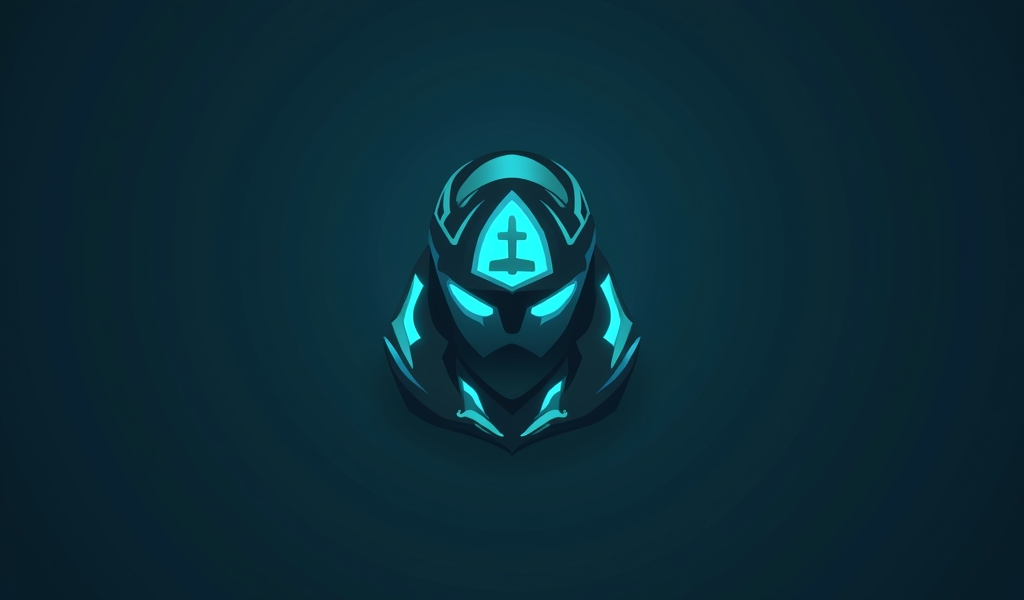
Warding and Vision Control
Mastering vision control is a fundamental aspect of learning how to play Nautilus effectively. As a support, your warding responsibilities are critical to team success. Early game, focus on river control and tri-bush vision to prevent ganks and protect your ADC.
As the game progresses, shift your warding strategy to objective control. Place deep wards in the enemy jungle approximately 1-1.5 minutes before major objectives spawn. This gives your team crucial information about enemy movements and lets you set up potential picks with Nautilus’s crowd control.
Always carry at least one control ward and prioritize clearing enemy vision. Denying sight is just as important as gaining it, especially when setting up for Baron or Elder Dragon. Statistical data shows that supports with higher vision scores consistently achieve better win rates.
Remember that Nautilus’s Q can be used to check brushes safely from a distance. This technique allows you to face-check dangerous areas without putting yourself at immediate risk. When sweeping for wards, try to stay near teammates who can follow up if you encounter enemies.
During late game, maintaining vision control becomes even more critical. A single catch can lead to game-ending objectives. Try to establish vision lines that protect your team’s movement paths while revealing enemy rotations. Like Braum players, successful Nautilus mains understand that vision control is often the difference between victory and defeat in close matches.
Champion Synergies and ADC Pairing
Nautilus works exceptionally well with certain ADCs and team compositions that can capitalize on his engage potential. Understanding these synergies will help you maximize your impact when learning how to play Nautilus effectively.
For ADC pairings, Nautilus thrives alongside champions with strong follow-up damage or additional crowd control:
- Jhin: His W root can chain perfectly with your CC, and his fourth shot executes enemies you’ve engaged on
- Samira: Her passive allows her to follow up on your crowd control with additional CC
- Kai’Sa: Can quickly follow your engage with her ultimate, creating devastating burst damage
- Draven: His high early damage complements your level 2 all-in potential
In terms of team compositions, Nautilus excels with champions that can follow up on his engages. Malphite in the top lane creates a double-engage threat that can overwhelm enemy teams. Mid laners with burst damage like Syndra or Veigar can immediately delete targets you lock down.
Be cautious when pairing with extremely passive ADCs or team compositions that lack follow-up damage. While Nautilus can set up plays, he relies on his team to convert these opportunities into kills. Communication with your ADC about engage timing is crucial for lane success.
Additionally, consider the enemy composition when selecting Nautilus. He struggles against heavy poke and disengage comps (like Janna, Lulu, or Karma). Against these matchups, you may want to consider picking Blitzcrank instead, who can more reliably isolate targets.
Some jungle-support synergies are particularly potent with Nautilus. Champions like Jarvan IV, Sejuani, or Vi can create a nearly inescapable amount of crowd control when combined with your kit. Coordinate with your jungler to maximize these potential combinations.
Conclusion
Mastering how to play Nautilus requires understanding his strengths as an engage support with exceptional crowd control capabilities. By following these seven essential tips, you’ll be well on your way to becoming a formidable force in the bot lane and beyond.
Remember that Nautilus’s greatest strength lies in his ability to create opportunities for his team through well-timed engages and peeling. Practice your hook accuracy, understand your power spikes, adapt your builds to each match, and coordinate with your team to make the most of your crowd control.
Vision control remains a critical aspect of successful Nautilus gameplay, allowing you to set up picks and protect objectives. Pair with ADCs and team compositions that can follow up on your engages for maximum impact. Like other tank supports such as Alistar, your presence alone can deter enemies from aggressive plays.
Whether you’re looking to climb the ranked ladder or simply improve your support gameplay, Nautilus offers a powerful and satisfying playstyle that rewards good decision-making and team coordination. The Titan of the Depths is ready to anchor your enemies and carry your team to victory—now it’s up to you to master his potential.
Frequently Asked Questions
Is Nautilus good for beginners in League of Legends?
Yes, Nautilus is excellent for beginners due to his straightforward kit, tanky build, and impactful crowd control that remains useful even when behind. His point-and-click ultimate provides reliable engage potential that makes him forgiving for newer players.
What is the best rune setup for Nautilus support?
The most effective rune setup for Nautilus is Aftershock as your keystone, followed by Font of Life, Conditioning, and Unflinching in the Resolve tree. Secondary runes typically include Biscuit Delivery and Cosmic Insight from the Inspiration tree for sustain and ability haste.
How do I land Nautilus hooks more consistently?
To land hooks more consistently, aim at where enemies will be rather than where they are, and throw your hook when enemies are locked in animations like last-hitting. Using the hook immediately after flashing or from brush ambushes significantly increases your success rate.
When should I pick Nautilus over other tank supports?
Pick Nautilus when your team needs reliable engage and crowd control, particularly against immobile carries or assassin-heavy compositions. He’s especially strong when paired with ADCs that have follow-up damage or when your team lacks initiation tools.
What is Nautilus’s biggest weakness?
Nautilus’s biggest weaknesses are his vulnerability to poke in lane, low mobility without his Q, and mana issues in extended fights. He also struggles against champions with multiple dashes or spell shields that can avoid or negate his crowd control abilities.

